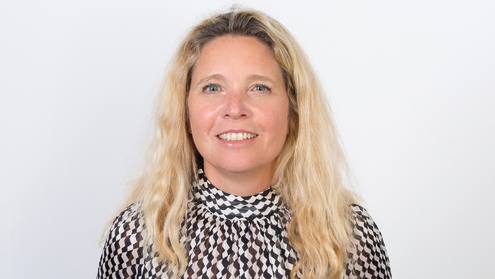In May 2024, a tectonic shift will be felt across the international capital markets because the US, in collaboration with Canada and Mexico, is set to transition from the current two-day settlement cycle (T+2) after trade execution to a more streamlined one-day cycle (T+1). This move will dramatically reduce the time for market participants to complete a whole range of post-trade activities that lie between the execution of a trade and its settlement, such as the simultaneous delivery of the securities and cash.
The move, recently finalised by the US Securities and Exchange Commission after extensive industry deliberation led by the Depository Trust and Clearing Corporation, seeks to mitigate credit and counterparty risks, potentially reducing margin requirements and fostering operational efficiency. In light of events surrounding so-called meme stocks like GameStop in 2021, the initiative also aims to enhance investor protection.
The global implications
Unsurprisingly, the US move has stirred up reaction and discussion among regulators and market participants across the securities industry in other markets around the world, assessing direct implications and driving consideration of whether (and how) the adoption of a similar overhaul to boost market efficiency and international alignment can lead to further benefits. While the US discourse primarily focuses on domestic considerations, it is clear that the benefits of a shorter settlement cycle could extend to other markets, and we have seen this step taken recently, for example in India.
The transition to T+1 poses substantial challenges and costs, necessitating a comprehensive overhaul of existing infrastructure.
However, the transition to T+1 poses substantial challenges and costs, necessitating a comprehensive overhaul of existing infrastructure across the entire securities lifecycle and a fundamental re-evaluation of post-trade processes. Front-office desks will also need to be repositioned, with new processes and tools for funding, liquidity and risk management required to guard against potential disruption.
In Europe, these discussions come at a time of an already tightened focus on the settlement process and related challenges, which led to the recent update of the EU Central Securities Depositories Regulation, introducing stringent measures to improve settlement efficiency, including cash penalties for failures. This work is ongoing and the International Capital Market Association (Icma) has been playing a key role on the industry side, leading discussions to better understand current bottlenecks and identify drivers for improving settlement efficiency, including the use of related settlement optimisation tools such as partial settlement.
The UK and EU state of play
The issue was initially picked up in the UK, when the government announced the launch of an industry taskforce, the UK Accelerated Settlement Taskforce, in December 2022. It is mandated to explore the case for moving to T+1 and how this could be implemented. An interim report with initial findings is expected by the end of 2023, followed by a final report with more specific recommendations in autumn of 2024.
In the EU, where considerations are considerably more complex, deliberations have been more measured. The European Securities and Markets Authority (Esma) has been charged with preparing a cost-benefit analysis in relation to T+1 by the end of 2024. As a first step, a consultation on the potential shortening of the settlement cycle was launched on October 5.
While the EU, UK and other jurisdictions assess the relevance to their own markets and how (or when) to follow suit, Icma — representing the international fixed-income markets — believes that a measured approach to the topic is essential to ensure all of the issues, risks and opportunities are fully considered.
While assessing alignment with the US change might be beneficial, it could be more important to assess the fundamental stand-alone case by jurisdiction, and also for the EU and UK to be aligned given the very high transaction volumes and integration between the two markets. Misalignment of settlement cycles across jurisdictions is, of course, nothing new, but has more negative effects the greater the degree of interoperability.
The prospect of transitioning to T+1 necessitates substantial investments in automation, compelling firms to upgrade IT systems and post-trade processes, and potentially onboard external technology providers. While larger firms may have greater ease in deploying resources, the industry must carefully weigh these costs against potential benefits. Predicting the impact on end investors remains challenging, because the expected decrease in friction costs over time does not guarantee a proportional reduction in costs for investors.
The specificities of the EU market
In the case of the EU, where creating a more inclusive, deep, flexible and accessible capital market through the Capital Markets Union plan is a core policy focus, the challenges and costs are compounded by various factors, most notably due to the often-cited complexity and fragmentation of EU markets, as recently highlighted by European Central Bank president Christine Lagarde in her speech ‘A Kantian Shift for the Capital Markets Union’.
In the post-trade world, such fragmentation is particularly visible because it is reflected in the large number of national financial market infrastructures (trading venues, central counterparty clearing houses, central securities depositories), which all add to the complexity that distinguishes the EU from more centralised markets such as the US and the UK.
A migration to T+1 would also require a deeper review of current market operating times and cross-regional engagement, both at the trading and settlement level. At the trading level there has been a push in recent years in several markets to extend trading hours until late in the evening, partly motivated by the desire to align hours with the US market, thereby facilitating cross-border business. However, in a T+1 environment, late trading hours may pose a particular challenge, because it leaves very little time to conclude post-trade processes already on trade date (T+0) which would be necessary in order to achieve timely settlement on T+1.
At the settlement level, current cut-off times in existing settlement houses will also have to be extended, which leads to longer working hours and the introduction of extra shifts. Not unsurmountable issues, but still in need of careful scrutiny.
It should also be taken into consideration that in today’s global capital markets, transactions are often highly complex in nature, involving a multitude of instruments, currencies and counterparties. In this respect, executing one transaction across a number of instruments takes time.
Furthermore, different settlement cycles of underlying securities might create new challenges and potential costs. As a result, higher intra-day funding costs to finance overnight positions, or conversely an increased risk of settlement failures — at least temporarily — are to be expected.
Looking at the other side of a trade, market-making in bond markets, which also relies on a dealer’s ability to sell short, is expected to be affected, because the available time to source such bonds from the markets will contract. This would impose additional time constraints on fixed income front-office trading desks, and related repo and securities lending markets, again increasing the risk of settlement failures.
Towards same-day settlement?
Aside from the direct costs of a move to T+1, it is also important to appreciate the opportunity costs of firms having to prioritise T+1 over other important plans, including more forward-looking projects such as a move to T+0 and instantaneous settlement. Such projects would require a fundamentally different market (infra)structure and technology, including the digitalisation and ‘tokenisation’ of payments, which ultimately could allow for instant payment and settlement of securities.
This stands in contrast to the overhaul and modernisation of existing post-trade systems and processes for T+1. So, if the end goal is to move to T+0, T+1 will not fundamentally assist with this process. It should be pointed out, however, that the potential timelines for a move to T+0 would be very different to those of a move to T+1. Ultimately, the key question for the industry and regulators is about priorities and the future direction of travel, and where the real benefits are expected to emerge.
T+1 certainly can be a tool to reduce counterparty risks, enhance settlement efficiency and incentivise modernisation. On the other hand, high transformation costs are expected and other risks might emerge.
In conclusion, there are undoubtedly significant benefits to be enjoyed from financial market infrastructure which enables processes to happen more quickly and risks to be reduced. However, getting there is by no means an easy undertaking, especially in a jurisdiction such as the EU, given its size, scale and current relative complexity.
The imminent US move has set the wheels in motion in Europe, and it is very important that the industry and regulators come together to conduct a thorough cost-benefit assessment, considering the multifaceted challenges and potential risks. Esma’s call for evidence marks a pivotal step in shaping the future direction of settlement cycles, emphasising the importance of prioritising and aligning the industry’s goals.
Watching the US experience unfold and taking the time to get all the requisite building blocks lined up and in place is essential to ensure potentially costly mistakes are avoided.
Bryan Pascoe is chief executive of the International Capital Market Association.







